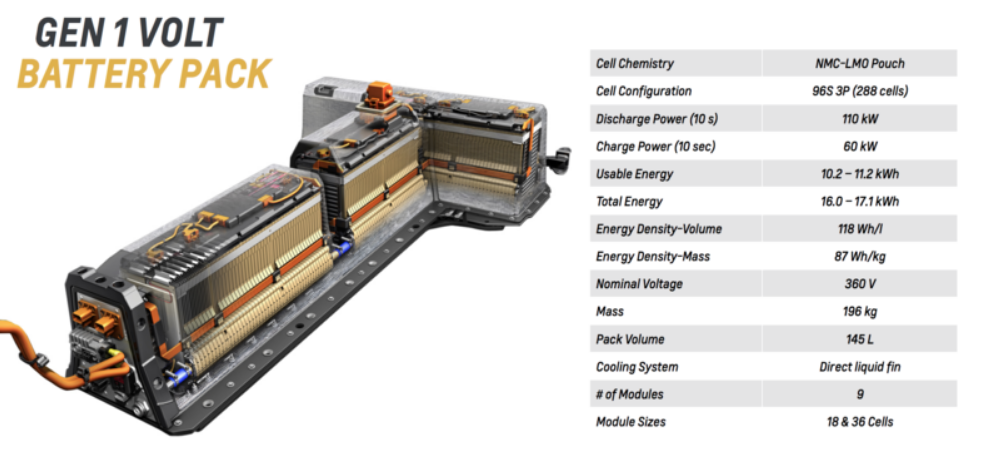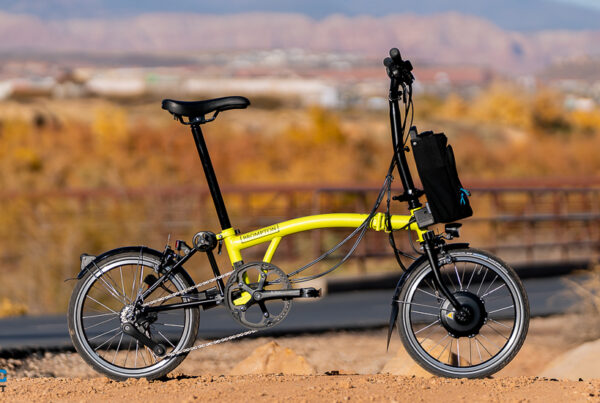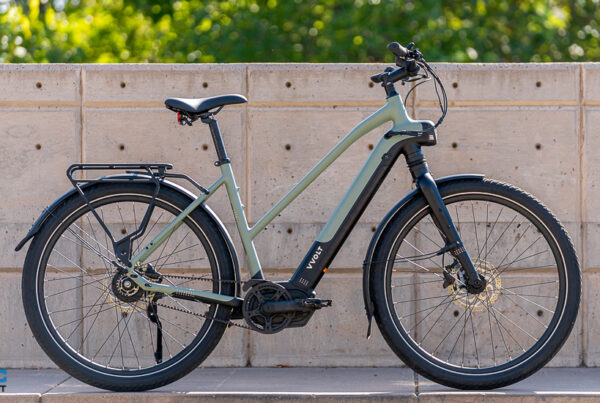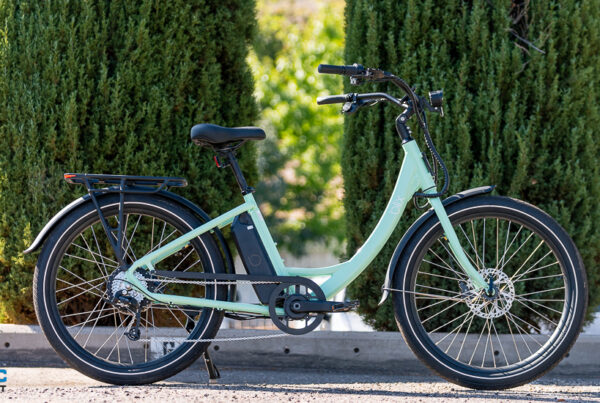A good friend of mine, Laurence who is also ebike obsessed rode his ebike from Ithaca, NY to Washington DC last year. This trip without traffic in a car is about 12 hours round trip which got me thinking, “How big of a battery would you need to ride for 12 hours straight on an ebike in a day at 30mph?” When you start pricing out quality ebike batteries with a built-in BMS you’re looking at close to $1000 per kWh. Although the prices have dropped a little over the last few years, they have not dropped as fast as the cost of batteries in electric cars. This article is about how I sprung for a Chevy Volt battery from a local junkyard and then took apart the nominal 352v pack and reconfigured it into 8 different cell packs that were each 44v nominal to use for ebikes, my electric tractor, and 2 electric generators that I used to build my tiny home and power my wife’s off-grid home in the winter. I ended up paying about 1/10th of what I would have had to pay if I had used quality new ebike packs with BMSs, although the entire process took about 8 hours worth of work. (actually it felt more like 8 hours of play)
I shopped for a Chevy Volt battery on car-part.com which is one of the best websites I have found for getting parts from a junkyard. This website hooks into the databases that large junkyards use but you must then call the junkyard (on the phone) to get the parts. Many junkyards will deliver parts for a small fee, and the volt battery is quite large and weighs over 400lbs so if you don’t have a pickup truck to transport it then it might make sense to have it delivered. Much of that weight is the metal frame and fiberglass cover, the battery packs themselves end up being about 50%+ heavier than normal ebike batteries (per usable kWh) when everything is stripped down.

I drove about 30 miles to get mine and they loaded it in the bed of my pickup on a pallet. The bottom of the battery was badly rusted, but in NY state they dump so much salt on the road it is just silly. I’m not sure why anyone would buy a new car in NY and then drive it on the road in the winter. They also broke off one of the main power connectors, but since I was throwing all that away and just keeping the packs I didn’t care. When you first start working with the battery you must be aware that the pack is 352v of DC power which can deliver 300 amps continuously. Working with batteries this large is exceedingly dangerous so if you don’t feel comfortable with high voltage power systems, then you should not do this project. You absolutely 100% will kill or seriously injure yourself.

Battery disassembly was very straight forward, there are many good videos on youtube of people taking off the cover and taking the battery apart. Once you remove the high voltage flat flexible cables that tie the packs together in series it is much less dangerous because it goes from being a 352v pack to 6 44v and two 22v packs. I always work with batteries with thick Nitrile ‘Gorilla’ gloves on, and I highly recommend that. Also when working with the battery it is important to use tools that have insulated handles in case you drop them or they accidentally hit the contacts. If your tool’s handles are not insulated then you can dip them in liquid vinyl (Plasti Dip is the main brand for doing this in the US).

The most dangerous time working on the lithium battery is when you take the plastic covers off. Then the welded contact flaps are all exposed and if you drop a metal tool or touch anything conductive between the metal tabs you can get a lot of sparks and arcing and possibly an explosion. Please don’t do this. I only took the plastic covers off long enough to mark them and cut them to the proper lengths. Once they were cut I broke off the plastic tabs that stick straight up and covered all the holes with Gorilla tape, then I put the lids back on.

Use large wood clamps to keep the packs together when replacing the threaded rods
The only tricky part of reconfiguring the volt packs was replacing the long threaded rods. I recommend draining the packs to 50% power or lower when you do this so that the lithium pouches will not be ‘puffy’ making everything you try to do harder. When you pull the threaded rods out the packs will expand slightly and you will need to put wood blocks on the end and a large wood clamp to pull it back together so you can push the new threaded rods through the pack and put nuts on the end. I used 1/4″ threaded rod that I bought from the local hardware store and you can use a hack saw to cut it down if you need to.

What is a ‘Power Station’
Many companies have started to design and sell small generators that either use battery packs for power tools (like this one from Ego for $1300) or large built-in batteries that are not removable. These are tied together with an AC inverter and you can use them as emergency power or power on the road in your RV or van life setup. The problem with all these setups is they are insanely expensive for how much power you get. The Ego Power station has 780Wh for $1300 which breaks down to $1.60 per Wh whereas the power station I created with the Volt pack is 11,500Wh usable for ~$1850 or $.16 per Wh or 10x cheaper than the Ego. Granted my setup is not pretty, nor does it have the safety features of the Ego setup, but even without a BMS it seems to work very well and the packs are staying balanced on their own.

Will these packs work with my ebike?
Most 48v ebikes are designed to work with a voltage ‘range’ that goes anywhere from 39v to close to 60v. There are high voltage and low voltage cutoffs on any quality ebike controller to protect it from damage. Since the Chevy Volt chunks are 44v nominal they should work with most 48v setups on the market. The problem with the Volt packs is that they are not particularly light. If you are using them for ebikes then I recommend that you leave the steel plates off the ends as they add a lot of weight and no real functionality. You can still expect that the packs are going to run about 40lbs per ‘chunk’. In answer to my above query with Larry’s trip to DC I think that you would burn through about 1kWh per hour so you would need to carry all 320 lbs of battery with you to ride for 12 hours without stopping (so you’re looking at getting a beefy cargo bike). If you then wanted to charge overnight you would need close to a 1000 Watt charger to get fully charged before your next morning ride. I’m not aware of any cheap lightweight 44v nominal chargers that do 1000W so if you know of one, please let me know in the comments below. I think if I was going to build a long-distance ebike like that I would start with a cargo bike frame that could carry a lot of weight down very low on the frame.

To BMS or not to BMS
There are BMS’s that are designed for the Chevy Volt pack that you can buy from ebay (like these here for ~$250), but I did not test any of them. It’s probably smart to run your batteries with a BMS as it makes them a lot safer, but since I’m working on a shoestring budget I’m opting to run without BMS’s. I haven’t had much luck with BMS’s in the past and I’ve lost several large packs (including a $1300 pack I built from scratch) from failed BMS’s so for now I’m going BMS free. If you do opt for getting BMS’s you will need one for every 48v module or a total of $2000 for 8 of them. There are many people on the internet who have been using Chevy Volt packs in off-grid homes for years and the packs are still ‘in balance’. The battery I got from the junkyard the cells and the 44v ‘chunks’ were all very much in balance and have stayed balanced while I have abused them for the last several months.
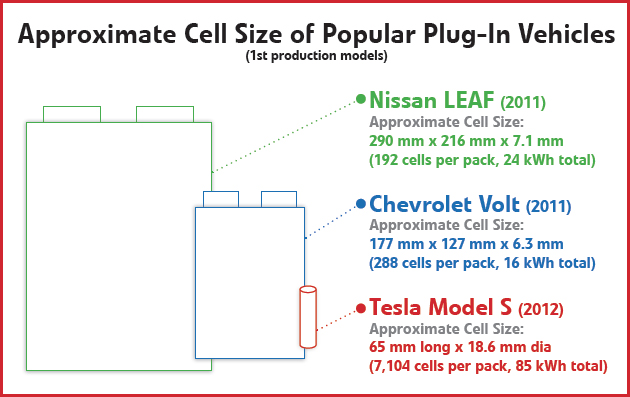
Don’t overcharge them & don’t drain them down too far without a BMS
If you charge the Volt packs over 51v the packs will get extremely volatile. I would keep the maximum charge to 50v just to be safe. I would also not drain the packs below 39v (resting voltage not under load) just to make sure you don’t damage the packs by going too low. I used a 48v Luna charger set to 80% which charges the packs to about 50.5v before shutting off. If you use a programable charger like this make sure it’s not set to 100% or the pack could well blow up if you charge it to 54v. Normal ebike 48v chargers will NOT work with the volt packs, they charge too high (and pack will go boom). I read somewhere that the total energy carried in this volt pack is equivalent to 2 sticks of dynamite, not sure I believe that but anytime you have potential energy storage you have risk.

You can tie together the two 22v nominal modules together to form a 44v nominal pack
It’s pretty straight forward to turn the two 22v chunks of the Volt pack into a 44v chunk. You have to remove both 22v chunks then put them together with wood clamps and threaded rod. Then put a bus bar between the positive and negative posts to make the two batteries run in series. You’ll have to cut a custom lid for that section of battery, mine ended up being two halves crammed together with a seam in the middle (which I covered with Gorilla Tape).

Check the voltages before you tie the packs together in parallel
Connecting the packs together in Parallel is one of the most dangerous parts of the entire operation. If any of the packs are off in voltage by more than about .1v then you can get serious issues as the packs try to instantly balance themselves stopped only by the resistance of the wire. I make sure to use spark resistant XT90 connectors which helps a lot with arcing when putting the connectors together, but please use a meter to check each and every 44v chunk before you hook them together. I used a spider charging cable which saved me a lot of soldering and can be found here. You will want to cut off the banana plugs (obviously) and replace them with whatever connector your charger has.

Finding a decent 48v AC inverter that wasn’t crap
This was a lot harder than I thought it would be. I bought a ‘5000W’ inverter from AliExpress for $115 shipped (from China), but it turned out to be pretty much crap. Sometimes I can get it to do 800W continuous, but most of the time it resets if I try to pull more than 700W and forget about powering anything with a motor that pulls a high startup current, it just doesn’t work. I spent $323 on this 3000W inverter from Amazon.com and I have to say I’m extremely pleased with it. It seems to run all my power tools including the table saw, chop saw, and circular saw without issues. I put XT90 female connectors on the inverter and then I can plug them into my medusa charging cable. If you want your inverter to regularly carry lots of power then use more than one cable (I used 3 so that each cable will never carry more than 1000W continuous). I find it’s much easier to use multiple smaller wires that run in parallel than to try to use one really thick wire.

Crimping vs solder filling lugs
With high voltagehigh power applications, some people use crimpers and some use solder-filled lugs. I tend to use solder-filled lugs because in order to have a really good solid crimp you have to have a large powerful crimping tool that can put the right amount of pressure (which I don’t have). I used a clamp to hold the copper lugs upright and heat them with a propane torch and fill the lugs about 3/4 full of solder then I heat the wire quickly and plunge it into the hot solder. Don’t move the wire for about 30 seconds to make sure that the solder cures without cracking and then you have a very solid connection. A small amount of heat shrink tubing is used to cover up the lug and only leave the eye hole exposed. You can get 100% copper lugs on eBay for pretty cheap, I tend to get them from people who sell them for large high power audio car systems, as they tend to be the highest quality. I also get my 300 Amp fuses from these suppliers as they are cheap and effective.
I spent hundreds of hours online reading about people who had reconfigured a Chevy Volt pack before I pulled the trigger. I hope that this article will help inform and inspire others to take the plunge. At $130 per usable kWh these packs are some of the cheapest cells you can get and the engineering behind the Chevy Volt is quite good. My friend Steve who works at Borg-Warner as an engineer told me that GM spent over a billion dollars on research when building the Volt and it shows. Although I am not a GM fan, taking apart this battery and using and abusing it for my own purposes has made me realize maybe GM it’s the root of all evil.
Ride On.
As a side note, I just bought a BBSHD with a Ludicrous controller from Lunacycle.com on their Black Friday sale here. Normally it is impossible to get the Ludicrous controller without buying an ebike from them so this is a great time to do it if you’re thinking of upgrading.

Source link

